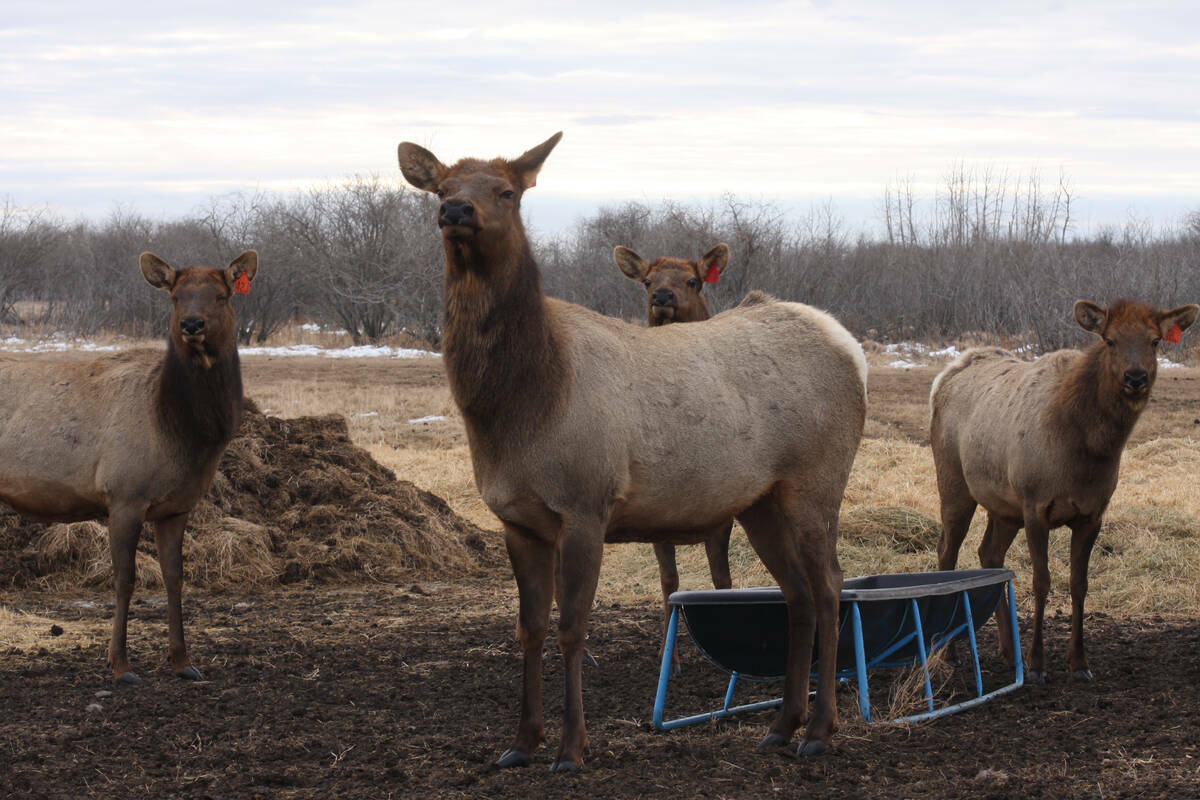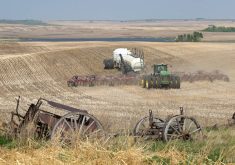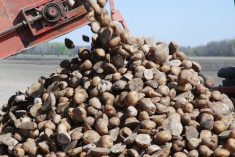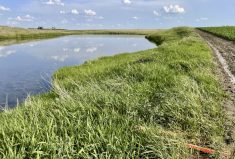Alberta producers could be facing a mixed bag of soil conditions this year, depending on where they farm and who they ask.
Although it’s still hard to tell due to a long winter and extended snow cover, Laura Richard said the province’s southern region will likely be in the best shape thanks to winter precipitation.
“Generally speaking, regions south of Calgary have gotten between 60 and 115 per cent of average precipitation so those are our areas of real recovery,” said the agro-climate analyst with Agriculture and Agri-Food Canada. “The southern areas also received good fall moisture going into winter.”
Read Also

Cervid harvest preserves to be developed in the province under Bill 10
The Government of Alberta has given approval for creation of cervid harvest preserves.
However, Bruce Burnett, director of crops and weather for MarketsFarm, a division of Glacier FarmMedia, identified the south as a potential trouble spot in spite of good winter precipitation.
“The areas I’m most concerned about remain in southern Alberta and western, west-central and southwest Saskatchewan,” he said. “Those areas — although we received normal to slightly above normal precipitation this winter — went into the winter season very, very dry.
“Last year’s growing season was brutal and some of those areas didn’t replenish the subsoil moisture.”
Richard reserved her concerns for a good chunk of the rest of the province.
“Unfortunately there’s a big swath between Edmonton and Calgary, as well as the northeast, where they’ve only received 40 to 60 per cent of normal precipitation. … There’s still some concern over the soil moisture.”
The same goes for parts of the Peace, she said.
“Southern portions of the Peace got more precipitation but the central and northern parts were definitely in that less than 60 per cent of normal precipitation.”
Snowpack generally looks good in dry areas around Edmonton and the Peace. However, it can be hard to count on until it’s melted.
If there’s any comfort for producers in drier areas, it’s that Alberta farmers generally get spring rains.
“We know for sure that it’s the rains in June and July that really determine the quality of the crops and that’s how Alberta actually gets the majority of its moisture,” said Richard.
On the Prairies overall, it’s going to be a balancing act between soil moisture giving crops their start and timely rainfall in the growing season, said Burnett.
“Most of the precipitation that we receive in the Prairies is in the May-June-July-August period,” he said. “If we don’t get normal precipitation during that time frame, and especially if we don’t get it at the right times, then we certainly see crop stress developing.”
Areas with the lowest subsoil moisture are at highest risk.
“The problem with that is we have no, shall we say, capacity to withstand severe periods of drought during the growing season,” Burnett said. “So if you get into a dry spell in, let’s say, the first three weeks of July, then you see a lot of stress developing in the crops.”
As the season wears on, Burnett said he’ll be keeping an eye on the western part of the Prairies.
“That’s specifically the area I’m most concerned about,” he said.
Elsewhere on the Prairies
In the short term, Burnett said he’ll watch southern Manitoba, particularly the Red River Valley, as it works its way through any flooding issues and the late spring.
“Soil moisture levels, especially to start the spring, look to be OK, if not maybe a little bit excessive in areas in the eastern Prairies where we’ve had some late season snow, along with a lot of flood waters coming up from the United States,” he said.
Generally speaking, much depends on how quickly the snowpack melts, but that’s not as big a concern in some areas.
“Fortunately, on a lot of the eastern Prairies, we really did have very good subsoil moisture levels, so it’s not gonna make too big of a difference, not getting the optimal infiltration this year,” Burnett said.
“I think we’re gonna be quite fine. We’ll start off with decent soil moisture levels as we go into the spring seeding season.”
The soil moisture situation seems reasonable in most of eastern Saskatchewan, except for the extreme southeast corner. Moving west, things are dry.
Shifting weather patterns are an additional factor. The La Niña phase has ended, to be replaced by a neutral phase that’s likely to be replaced by El Niño.
“So that means that we probably are gonna see a different weather pattern than we’ve been experiencing for the last few years,” Burnett said.
– With Glacier FarmMedia files
















